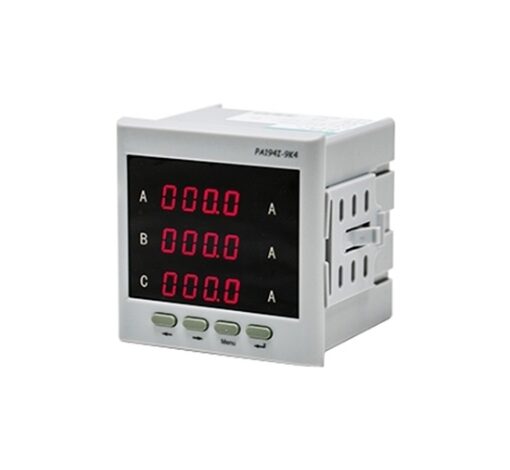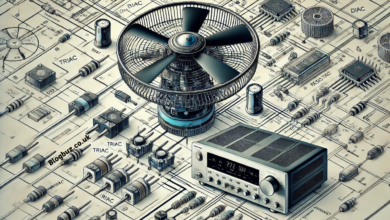Digital Ampere Meters: Boost Your Electrical Safety

In today’s rapidly evolving technological landscape, the accuracy and safety of electrical measurements are more critical than ever. Whether you are an experienced electrician, an engineering professional, or a DIY enthusiast, understanding the tools that help monitor and control electrical currents is essential. One such vital instrument is the Digital ampere Meter. These devices enable non-invasive and highly accurate current measurements, ensuring that electrical systems operate efficiently and safely.
In this guide, we delve deep into the world of electrical measurement, exploring everything from the fundamental principles behind current measurement to the advanced features and future trends of these instruments. By the end of this article, you will have a comprehensive understanding of Digital ampere Meters and how they can enhance both residential and industrial applications.
What Are Digital Ampere Meters?
Digital ampere Meters are advanced electrical testing devices that measure current flow without requiring direct contact with the conductor. Instead of relying on traditional intrusive methods, these meters use sophisticated electronic sensors and digital displays to provide real-time readings of electrical current. Their non-invasive nature not only increases safety but also allows for rapid diagnostics in complex electrical systems.
These meters are integral in a variety of fields—from ensuring the safety of home wiring to monitoring high-power industrial circuits. They have become indispensable in modern electrical work, reducing the risk of errors and accidents while improving efficiency and reliability.
Key Features of Digital Ampere Meters
Modern Digital Ampere Meters come equipped with a variety of features that set them apart from older, analog-based devices. Here are some of the key features:
- Non-Invasive Measurement: They can measure current without disconnecting circuits, significantly reducing downtime and the risk of electric shock.
- Digital Display: Clear and precise readings are provided on an LCD, ensuring ease of use in various lighting conditions.
- High Accuracy: Advanced sensors offer high precision in both AC and DC current measurements.
- Portability: Many of these devices are compact and lightweight, making them ideal for both fieldwork and laboratory use.
- Data Logging and Connectivity: Some models include features like data logging and wireless connectivity, which facilitate real-time monitoring and remote diagnostics.
Advantages of Digital Ampere Meters
The benefits of using Digital ampere Meters are numerous, particularly when compared to their traditional counterparts. Here are some advantages:
- Enhanced Safety: By eliminating the need for direct contact with live wires, these meters significantly reduce the risk of electric shock.
- Improved Accuracy: Digital sensors and advanced algorithms ensure precise readings, crucial for troubleshooting and system maintenance.
- Time Efficiency: With the ability to quickly clamp around a conductor and provide instantaneous measurements, they save time during installations and repairs.
- User-Friendly: Their intuitive interfaces and digital displays make them accessible to both professionals and novices.
- Versatility: These meters are suitable for a wide range of applications, from residential electrical systems to complex industrial setups.
The integration of modern digital technology into these meters represents a major leap forward in ensuring both the safety and efficiency of electrical systems.
Types of Digital Ampere Meters
Digital ampere Meters come in various types, each designed to meet specific application needs. The primary categories include:
Analog vs. Digital Instruments
Although traditional analog meters are still in use, digital models have become the industry standard due to their accuracy and ease of use. Digital models offer a more precise numerical readout compared to the needle-based display of analog meters.
Specialized Models
Some Digital ampere Meters are designed with specialized features for niche applications. For example, certain models incorporate:
- Data Logging: For recording measurements over time.
- Peak Hold Function: To capture transient current spikes.
- Wireless Connectivity: Enabling remote monitoring and integration with other smart devices.
How Digital ampere Meters Work
The operation of Digital ampere Meters is based on the principle of electromagnetic induction. When current flows through a conductor, it creates a magnetic field. The meter’s clamp, which surrounds the conductor, detects this magnetic field. The device then converts the magnetic field data into an electrical signal, which is processed by internal electronics to display the current measurement on a digital screen.
Measurement Techniques
Digital ampere meters are primarily used for AC current measurements, where the alternating current creates a fluctuating magnetic field. However, some advanced models also feature technology to measure DC current accurately. The technology involved typically includes:
- Hall Effect Sensors: For DC current measurement.
- Current Transformers: For AC current measurement.
Applications of Digital ampere Meters
Digital ampere Meters are used in a variety of settings, each benefiting from their precision and safety features. Here are some key applications.
Residential Use
Homeowners use these meters to troubleshoot electrical issues, verify circuit loads, and ensure that household appliances are operating safely. Their non-invasive design makes them ideal for everyday use in residential environments.
Industrial Applications
In industrial settings, the need for precise electrical measurements is paramount. Digital ampere meters are used in:
- Manufacturing Plants: To monitor and maintain high-power machinery.
- Data Centers: For ensuring the reliability of power distribution systems.
- Commercial Buildings: To manage energy consumption and detect anomalies in electrical circuits.
Research and Development
In laboratories and R&D facilities, these meters help in testing and validating new electrical systems and technologies. Their high accuracy makes them indispensable tools for scientific research and development projects.
Maintenance and Calibration for Digital ampere Meters
Like all precision instruments, Digital ampere Meters require regular maintenance and calibration to ensure continued accuracy and reliability. Here are some best practices
Regular Testing
Perform regular functional tests against known standards to ensure that the meter provides accurate readings. Routine checks can help identify issues such as sensor drift or battery degradation.
Calibration Services
Professional calibration services are recommended, especially for devices used in critical applications. Calibration not only verifies accuracy but also extends the life of the instrument.
Environmental Considerations
Ensure that the meter is used within the recommended environmental conditions. Extreme temperatures, high humidity, or excessive dust can affect performance and accuracy.
Future Trends in Digital ampere Meters
The future of Digital ampere Meters is bright, with continuous advancements in technology promising to enhance their functionality and integration capabilities. Here are some trends to watch
Integration with IoT
The integration of Internet of Things (IoT) technology is revolutionizing electrical measurement. Future digital ampere meters may offer real-time data transmission to cloud-based monitoring systems, enabling predictive maintenance and enhanced energy management.
Enhanced Data Analytics
With the incorporation of machine learning algorithms, upcoming models could provide deeper insights into electrical system performance, automatically identifying anomalies and suggesting corrective actions.
Improved Battery Life and Portability
Advancements in battery technology and device miniaturization are expected to make these meters even more portable and longer-lasting, further expanding their use in remote and harsh environments.
These future trends will undoubtedly make Digital ampere Meters even more valuable in a wide range of applications.
Choosing the Right Digital Ampere Meters
Selecting the ideal Digital ampere Meters for your needs involves considering several factors:
Measurement Requirements
Determine whether you need a meter primarily for AC or DC measurements. While many models cater to both, some are optimized for specific applications.
Accuracy and Precision
Evaluate the accuracy specifications provided by the manufacturer. High precision is essential for critical applications, particularly in industrial and research settings.
Build Quality and Durability
Consider the environment in which the meter will be used. Devices used in industrial settings should be rugged and resistant to environmental factors like dust and moisture.
Additional Features
Look for features such as data logging, wireless connectivity, and ease of calibration. These can significantly enhance the usability and functionality of the meter.
Conclusion
In summary, Digital ampere Meters offer a modern, non-invasive solution to current measurement that significantly enhances both safety and efficiency. They have evolved from traditional analog methods into sophisticated digital instruments that are indispensable in today’s electrical testing landscape. Whether used in residential, industrial, or research applications, these devices provide accurate, real-time data that can help prevent accidents, reduce downtime, and optimize system performance. Investing in the right meter, maintaining it with proper calibration, and staying informed about future trends can empower professionals and enthusiasts alike to harness the full potential of electrical measurement.
As you consider upgrading or adding to your electrical toolkit, remember that the right choice in Digital Panel Meters can make all the difference. Embrace the advantages of precision, safety, and technological innovation, and take the next step in ensuring that your electrical systems are reliable and efficient. If you found this guide helpful, consider exploring more detailed resources and professional reviews to further enhance your understanding.
Frequently Asked Questions (FAQs)
What are Digital ampere Meters and why are they important?
Digital ampere Meters are non-invasive devices used to measure electrical current with high accuracy. They are crucial for ensuring safety and efficiency in electrical systems by providing precise measurements without direct contact with live conductors.
How do Digital ampere Meters differ from traditional analog meters?
Unlike analog meters, Digital ampere Meters provide numerical digital readouts, offer greater accuracy, and minimize the risk of electrical shock by allowing non-invasive current measurement.
Can Digital ampere Meters measure both AC and DC currents?
Yes, many advanced Digital ampere Meters are designed to measure both AC and DC currents, though some models are optimized specifically for AC measurements.
What maintenance is required for Digital ampere Meters?
Regular calibration, routine testing against known standards, and careful consideration of environmental conditions are key to maintaining the accuracy and longevity of Digital ampere Meters.
How can I choose the right Digital ampere Meters for my needs?
When choosing Digital ampere Meters, consider factors such as measurement requirements (AC/DC), accuracy, build quality, and additional features like data logging and connectivity. Evaluating these aspects will help ensure that you select the best instrument for your specific application.




